Reforesting Madagascar – For Free!
Why And Where We Plant Trees In Madagascar
In 2018 B’n’Tree began reforesting Madagascar. But why do we plant trees in Madagascar? What’s in it for you? And why would you ever want to visit this breathtakingly beautiful island?
Let’s have a look at the differences we’ve made so far, and how you’re benefiting from our ongoing work in this must-visit country without even realising it.
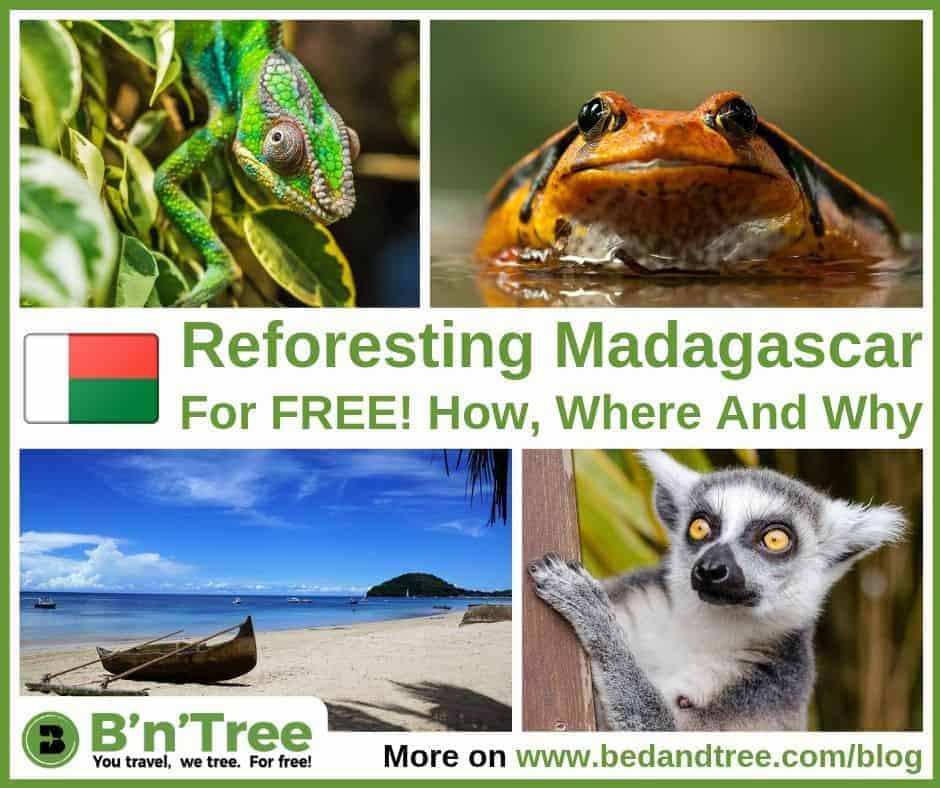
Madagascar is one of the most naturally beautiful countries on the planet. Its tropical climate and convenient island location off Africa’s south-east coast have blessed it with outstanding wildlife, sublime beaches and adventure to match some of the world’s top destinations.
However, Madagascar is also historically one of the poorest countries in the world. Its rich and abundant terrain has been abused in desperate search of profitable natural resources.
Today B’n’Tree are working hard with local communities and conservation experts to right the wrongs of years gone by, fully realizing the potential of Madagascar’s agricultural resources.
Why We Are Reforesting Madagascar
Politically and economically, Madagascar has a long history of fragility. This was emphasized as recently as 2009 when a violent coup d’etat transferred political power to military power. With environmental studies and conservation efforts far down the country’s long priority list, much of Madagascar’s rich habitat has sadly been destroyed.
Madagascar’s Problem With Deforestation
It’s estimated that a staggering 80% of the island’s original forest has been decimated. This has a devastating effect on the quality of essential soils and also removes the precious habitats of many already-threatened ecosystems.
The rare mangrove forests and swamps are especially important and in need of protection. Since the majority of Madagascar’s biodiversity isn’t found anywhere else, it’s essential that these ecosystems have somewhere to live and reproduce.
Related: Reforesting Kenya. How, Why And Where We Plant Trees In Kenya
Where Are We Planting Trees?
The majority of our Reforesting Madagascar work takes place on the island’s northern shores. Specifically, we work near the Mahajanga area.
Mahajanga is Madagascar’s fourth-largest city, and we work on the shores to the west of it around 16°12’05.2”S, 44°29’07.9″E. We’ve found a skilled workforce here and a serious enthusiasm for repairing one of the areas most affected by mangrove removal.
But why are we replanting mangrove trees specifically? Read on to find out about their astonishing environmental benefits.
The Change That Reforestation Brings
By planting trees in Madagascar we’re delivering far-reaching environmental and social benefits. We’re providing insects, birds, flora, fauna and other animals with a future. Their habitats are protected and able to flourish once again.
Where once the locals would be forced to work in deforestation and the dangerous extraction of other natural resources, they can now earn a fair wage planting trees. There is a new and sustainable income for local families.
The changes our work brings truly is significant. Don’t believe us? Check out the remarkable success story of Mary and Boto. If you’re still not convinced, then we’ll explain in detail the social and environmental benefits below.
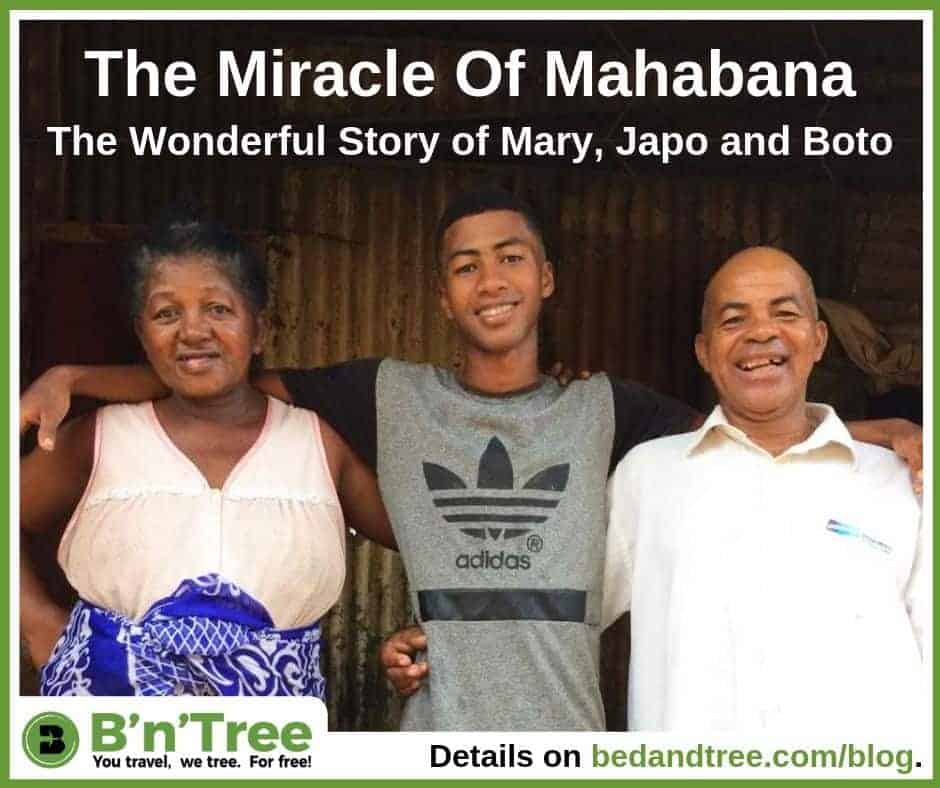
Environmental Benefits of Reforesting Madagascar
The environmental benefits we all get from reforesting Madagascar cannot be exaggerated. Immediate action is needed to replace the huge amounts of trees lost to deforestation.
Reforesting Madagascar’s coastline will provide a long-term carbon sink and help to restore the natural balance of the world’s atmosphere, while reforesting other tree species will provide a future for dwindling wildlife numbers.
The Endemic Species Of Madagascar
Many of the island’s endemic (i.e. it can’t be found anywhere else in the world!) ecosystems rely on trees for their survival (as much as 90%!). When most of us think of Madagascar, the image of the various lemurs will undoubtedly come to mind.
Incredibly, there are plenty more species in Madagascar which aren’t found anywhere else in the world including tomato frogs, panther chameleons, fossas, aye-ayes and more. This makes Madagascar one of the most unique wildlife locations on the planet. Sadly, many of these species are endangered: reforesting can help to recover their numbers.
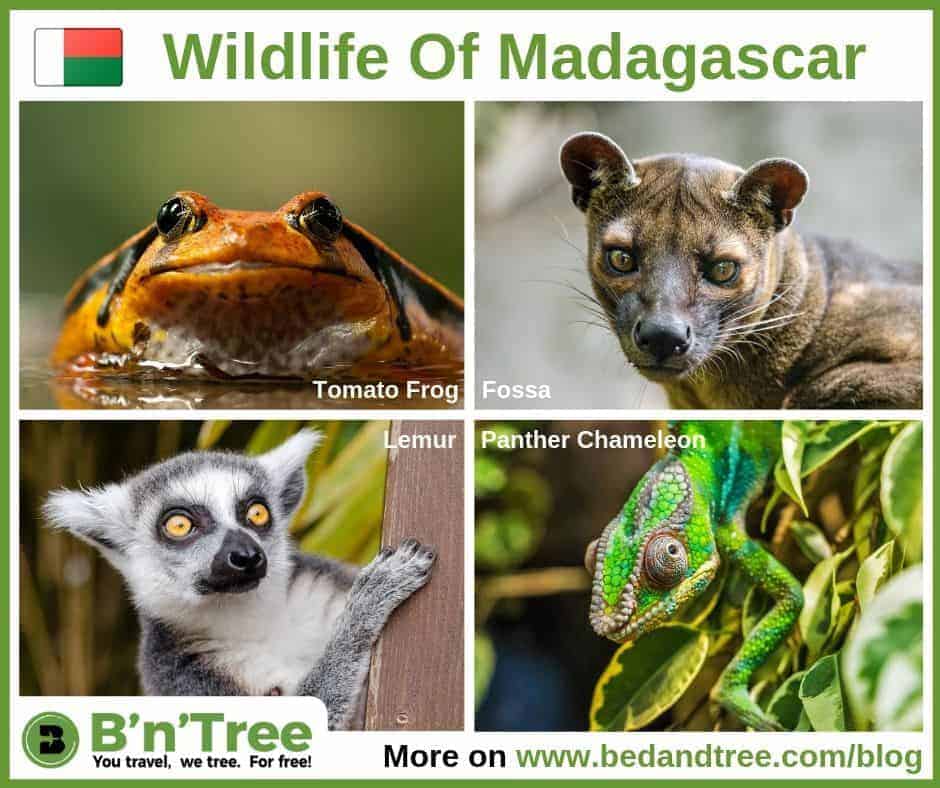
The Magic Of Mangrove Forests
Madagascar’s northern and western coasts are decorated with a huge population of mangrove forests. These trees, like other mangrove forests in tropical locations around the world, grow in patches of waterlogged soils where fine sediments gather. They provide communities with a natural form of a storm barrier, preventing flooding and erosion of important soils.
While they support an abundance of wildlife (both underwater and on land), they also help to control the balance of harmful emissions in the atmosphere. Mangroves absorb an astonishing amount of CO2, and many scientists believe they “may have the highest net productivity of carbon of any natural ecosystem.” Therefore, deforesting mangrove trees removes one of the world’s most important carbon consumers.
Mangroves also store a surprising amount of carbon dioxide and other greenhouse gases which they trap in flooded soils. Removing the trees releases these harmful, stored gases from their soils into the atmosphere.
Recent studies have found the effects of mangrove deforestation extremely concerning. One study found that mangrove deforestation alone might have been responsible for the release of nearly 450 million metric tons of CO2 into the atmosphere.
That’s an equivalent amount of released CO2 to Brazil (the world’s 11th largest CO2 emitter) in one year. Let’s put it more simply – an average coal-fired power plant in the United States produces 4.6 million metric tons of CO2. Mangrove deforestation is thought to have produced x100 times more. (Source: aashe)
Mangrove reforestation can create long-term carbon sinks and their expansion could increase crucial carbon storage along the coastline of many tropical countries. Madagascar, with a little under 5,000km of coastline, is benefitting hugely from mangrove reforestation.
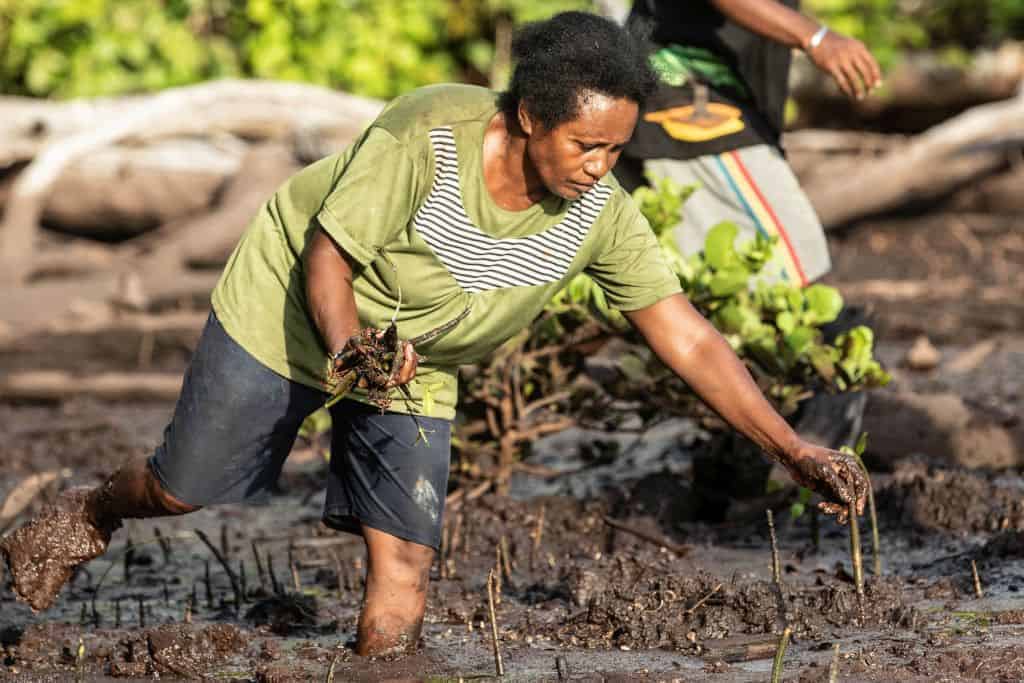
Social Benefits of Reforesting Madagascar
We’ve discussed the environmental benefits of reforesting Madagascar, but what about the 25 million people that live there? How does reforestation benefit them?
The Locals
First of all, like Boto and Mary, many families are now receiving fair wages for safe work. Thanks to B’n’Tree and our partners, tree planting is now a full-time profession for local people. This provides the first generation with monetary income, and the next generation with a much-improved environment around them.
Secondly, B’n’Tree makes sure that with a reliable income there is a great community benefit. Local people can afford to construct longer-lasting homes, purchase luxury goods (such as mattresses) and even construct schools.
Previously, many children in Mahabana and Mahajanga had to work to provide income, and families couldn’t afford the school costs. Many children now go to school, and they even have environmental study classes.
Those who would like to take the study further also now have families that can support them while they attend universities to study conservation. More educated minds means more prospects for the future of Madagascar and its rare biodiversity.
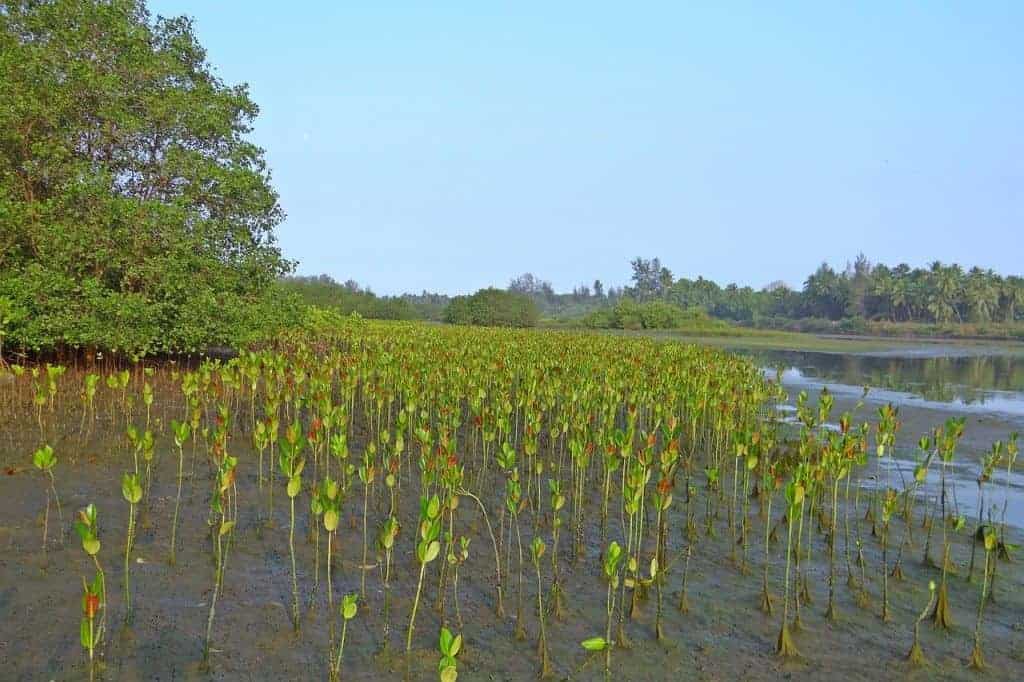
The Land Benefits
These reforested trees also have a part to play with the quality of the land. The roots of existing trees are far-spread and deep underground, providing nutrients and preventing land erosion. They dig into the dirt and keep a stronghold, preventing desertification – especially in coastal areas, where land erosion is a serious issue.
It’s estimated that around 80% of Madagascar’s population rely on trees for their natural resources, and that at least 70% of the population depends on the vegetation and agriculture surrounding them.
Without trees, the soil becomes less fertile and storm-waves become much bigger and travel further inland, since mangroves can’t protect the coastline. Crops needed for food struggle, and even medicinal plants begin to disappear. The more trees we plant, the healthier and more protected the land is.
How Does Reforesting Madagascar Benefit The Rest of Us?
If all of this wasn’t enough, there’s benefit in all of it for the rest of us too. By reforesting Madagascar we’re helping to combat lethal climate change. Mangroves can help to balance harmful air pollution and trees can help to mitigate rising world temperatures. No matter where we plant trees, we’re creating a greener, healthier surrounding for the millions of people nearby.
Stable incomes for Malagasies decreases poverty, allows them to live a more comfortable life and educates the next generation. Where harmful practices were accepted through necessity in the past, now there’s a growing vision for sustainability.
There are also benefits for the local economy and a more balanced distribution of goods. Madagascar can become a prosperous nation which is less reliant on world aid and trade. Opportunities for fair and sustainable employment means fewer people need to flee, desperately seeking work elsewhere.
Why Would You Visit Madagascar?
In case you’re thinking about visiting Madagascar, you’re thinking along the right lines. Despite its politically and financially-troubled history, it’s one of the most rewarding and unique countries to visit.
Madagascar is a colorful and chaotic clash of cultures from every corner of the world including Asia, Africa and Europe. Thousands of species of mammal, insect, sea life, flora and fauna populate the planet’s fourth largest island, much of it endemic.
The Tsingy Natural Park is all about the incredible natural formations, and is a UNESCO world heritage site. Here you’ll find intriguing climbing and trekking – for truly adventurous travelers.
The Andasibe-Mantadia National Park, on the other hand, is where you’ll find almost a dozen species of the infamous lemur. Trekking into the jungle in search of the lovable animals is normally a highlight of any trip.
If however, you’re looking for something a little more relaxed, then you’ll find it at the Nosy Be archipelago. These exotic islands are where you’ll find the picture-perfect beaches, blue waters and eco-friendly hotels. That being said, there’s a whole world of underwater treasures for divers to explore too.
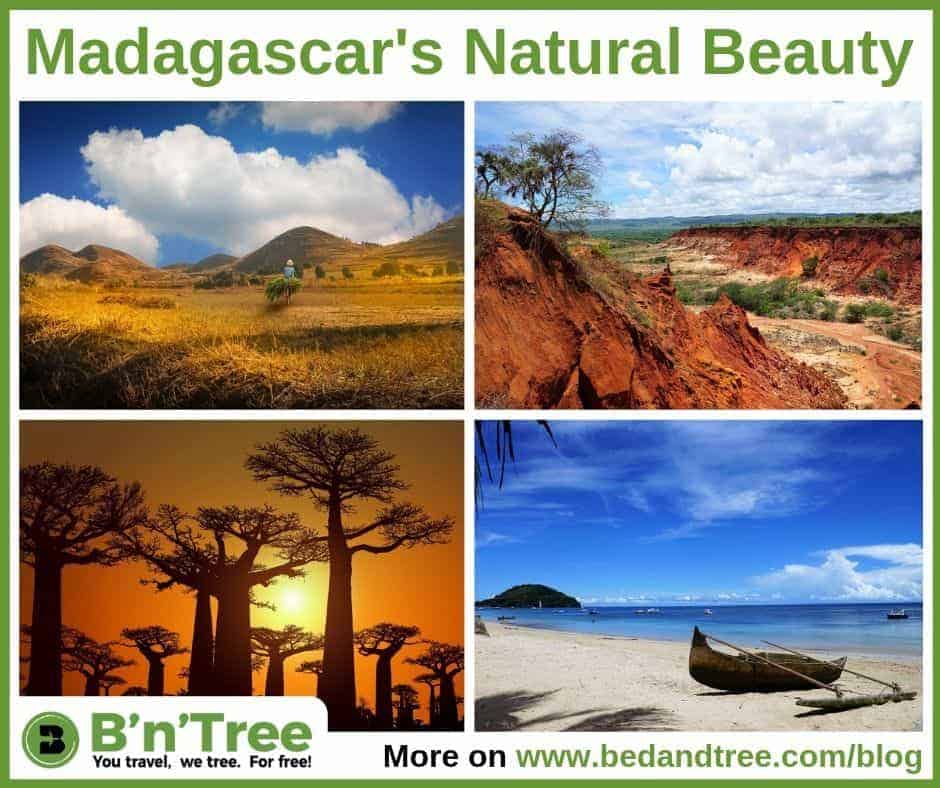
How You Can Help Reforest Madagascar – For FREE!
Check out our World Map to see how many trees we’ve planted to date (hint – it’s an awful lot).
By booking your accommodation and all other travel arrangements with us you’re helping to reforest precious ecosystems and spread the benefits throughout local communities. You’ll protect unique, endangered wildlife, and provide children with an education.
You also get the feel-good-factor of helping to protect the planet – simply by booking your travel arrangements with B’n’Tree. Who would have thought something so simple could be so beneficial? You won’t have to worry about your good karma for a while.
We’re all trying to travel sustainably but when we do, we normally discover a frustrating financial cost. The best part about using B’n’Tree is that it won’t cost you a single cent.
So what are you waiting for? Book your accommodation now and help us reforest this unique island. Even if you don’t have a holiday to look forward to, spread the word on Facebook and Instagram.
And in the meantime, while you’re still deciding on your next destination, read how to plant trees for free and discover further ways how to plant trees without doing it yourself, and without paying for it.
Last but not least, join our Facebook discussion on reforesting Madagascar. Why are you reforesting Madagascar? Have you been to this wonderful island? And which country should we help to reforest next?

Want to hear more from us? No problem. It’s free, safe, easy.